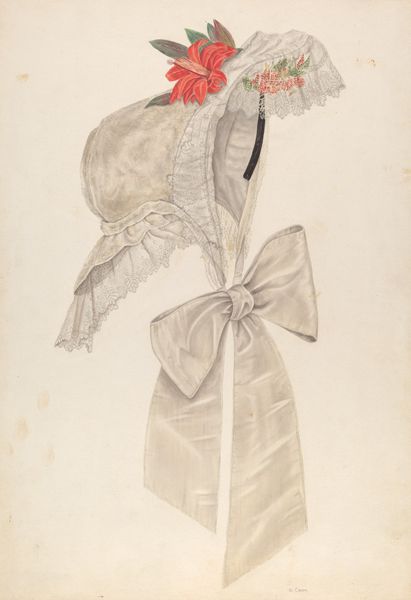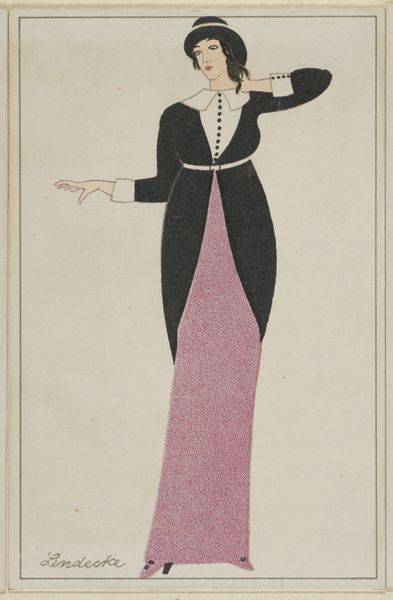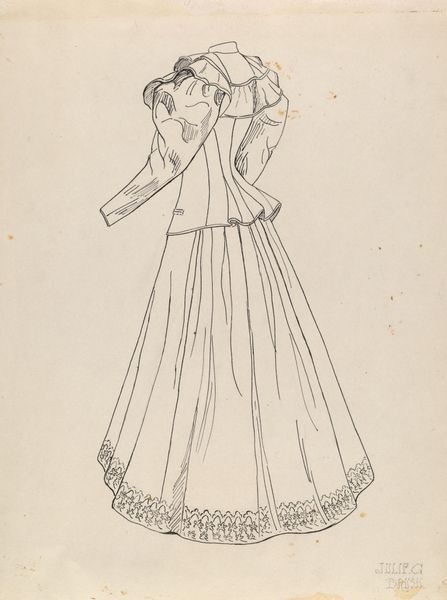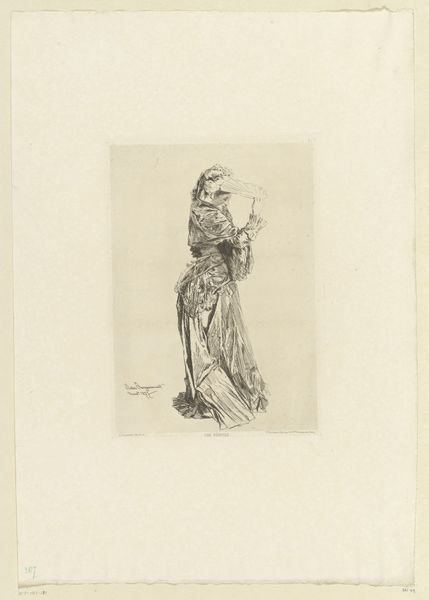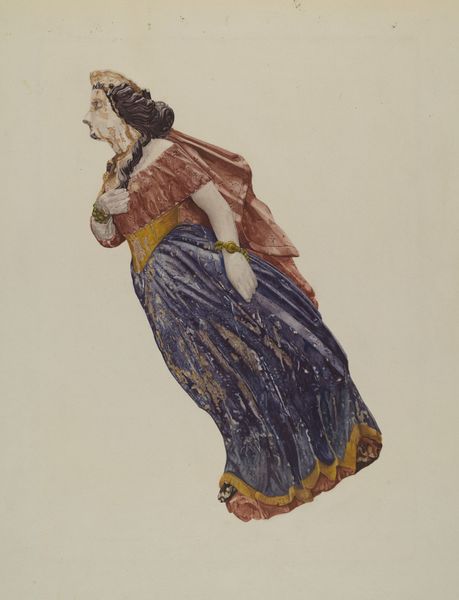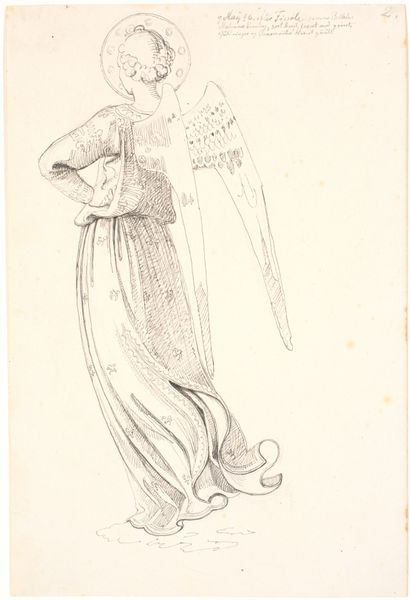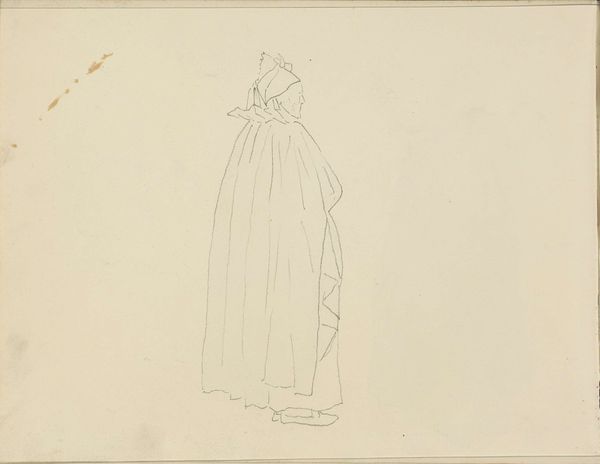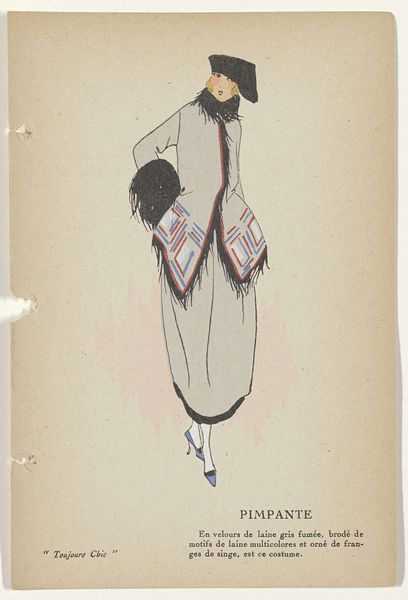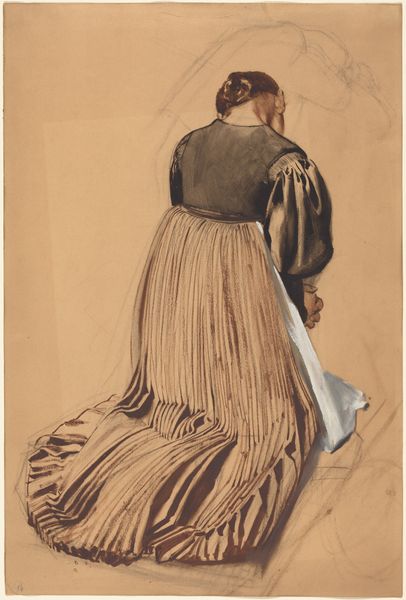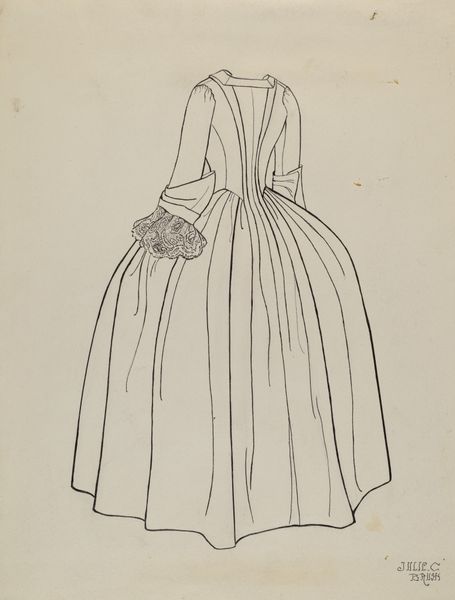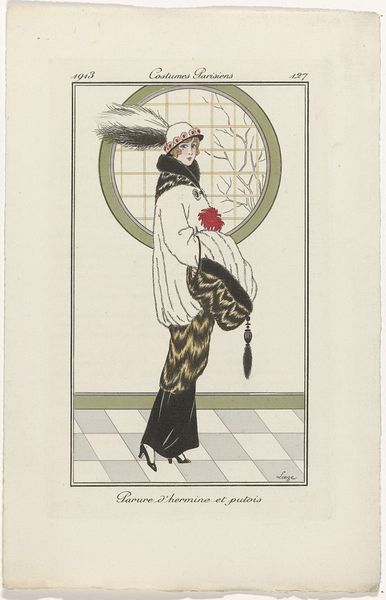
drawing
#
portrait
#
drawing
#
figuration
#
historical fashion
#
academic-art
#
cartoon carciture
Dimensions: overall: 29.8 x 22.8 cm (11 3/4 x 9 in.)
Copyright: National Gallery of Art: CC0 1.0
Curator: Here we have Marie Mitchell's "Riding Habit," a drawing from approximately 1940. It features a headless figure wearing a dark riding habit with what looks like another fainter sketch in the background. My first thought is… ominous! Editor: It does feel incomplete, ghostly almost. I’m intrigued by how Mitchell portrays the weight of the garment itself. The sheer volume of fabric and how it folds is almost sculptural. It draws attention to the labor involved in creating such an elaborate outfit. Were these the types of clothes machine-sewn? I wonder who the maker was... Curator: That’s a really interesting perspective, focusing on production. While that information is not readily available, riding habits were a significant status symbol. To commission or even purchase something like this indicated a certain level of economic privilege and it was an exclusive activity that mirrored larger gender norms and societal constraints for women in sports. Editor: Right. And look at the cropped head. In some ways, the missing head critiques traditional portraiture, or at least, emphasizes that the clothing carries more meaning than the identity of the wearer. How would you describe the craftsmanship? Is it skillful, adequate, or poor and how does that matter to its meaning? Curator: Well, Mitchell's background in fashion is really clear in the tailoring and how the drawing depicts all that rich material; the quality, depth, sheen of the luxurious material itself. Editor: Agreed. Thinking about its accessibility to the masses at the time also piques my interest. It's like she’s drawing both aspiration and an understanding of how unreachable such a lifestyle might have been to most women. Do you think its display or inclusion into any historical exhibitions may have influenced how it's perceived over time? Curator: Definitely. Placing “Riding Habit” in dialogue with other works or historical artifacts reframes how we see both the art object itself and its place in larger conversations about gender, class, and representation. It impacts who feels ownership over interpreting these visual languages, too. Editor: I see so many fascinating layers now, and have reconsidered my initial interpretation entirely. Curator: Precisely! And there’s so much more here to continue thinking about!
Comments
No comments
Be the first to comment and join the conversation on the ultimate creative platform.
